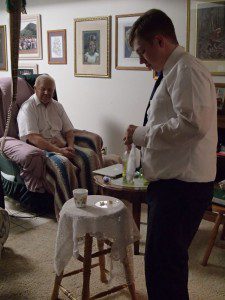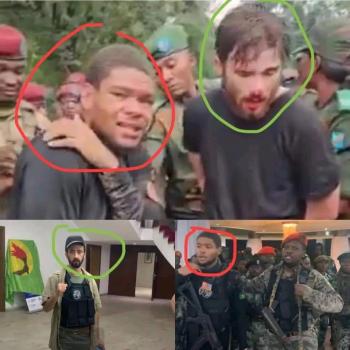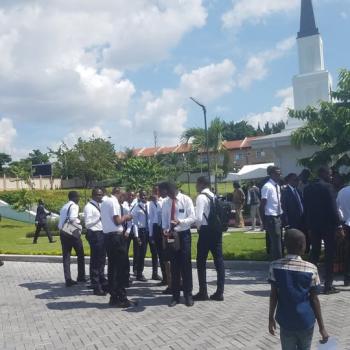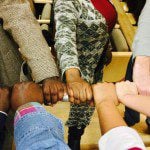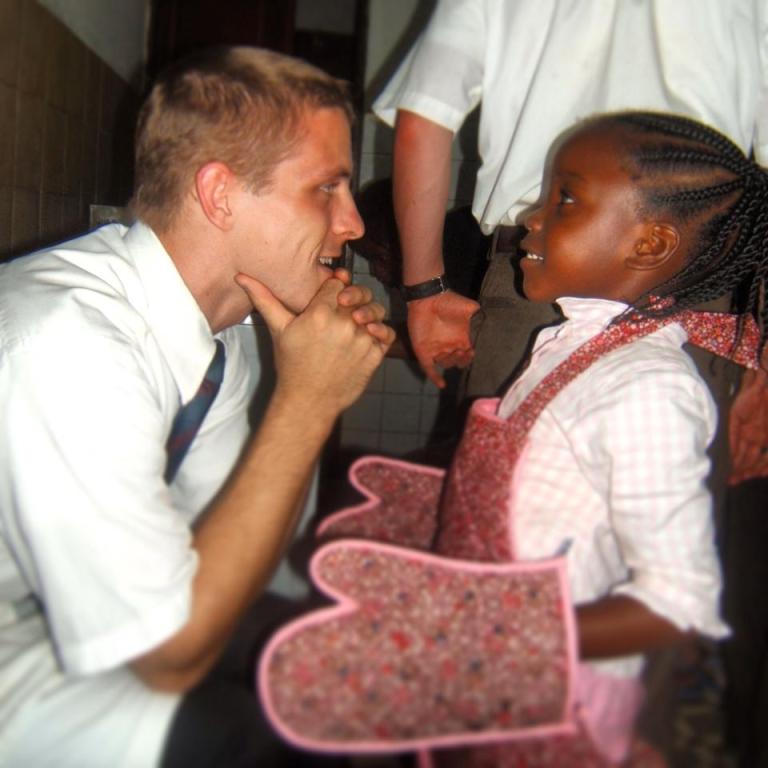I don’t understand how these little miracles happen. I have had some jaw-dropping right time/right place miracles, but more often the little ones—which I might miss if I weren’t committed to noticing them.
A couple of months ago, I met a lovely redheaded woman—age 27—in the local gym’s hot tub. Her smile was magnificent. I thanked her for being a redhead, something I say to most redheads because there are too few of us and we need to appreciate one another. Somewhere in the conversation, I mentioned that my dad had dialysis three times weekly. “Me too. I’m on dialysis,” she said. “I’m Beth.”
Conversation shifts. Unexpected turn.
In the next five minutes, she told me about her kidneys, which failed when she was eleven. She had a transplant, but it also failed. She had been on dialysis for a total of thirteen years. Half of her life.
I said that I would visit her at dialysis. I did that only once, when I saw her in a chair near my dad’s.
Dialysis chairs sit between oxygen dispensers and a five feet tall machine. Tubes are inserted via thick needles into one arm, and the blood moves through the machine for five hours, doing the kidney’s work. Each patient has a weight goal corresponding to body fluids to be pulled by the mechanical kidney. Some patients wear earphones and watch television. Many sleep. Only a few have visitors. Nurses and aides check blood pressure, blood sugar, potassium, and heart rate. Doctors and social workers make weekly rounds. Sometimes, a patient dies in the chair. Protocol is established. The patient is transported to the hospital, across the street, and not pronounced until there. Sometimes, patients faint. My father does this rather frequently, and I usually hold his legs and meet his eyes. “Dad,” I say, “are you with me? I’m anchoring you. Dad? Can you come back?” A nurse returns some fluid to the patient’s body when such fainting happens.
Yesterday was not a bad one at dialysis. When we were ready to leave, I saw Beth’s unmistakable red hair. “Is that Beth?” I called. She turned. No smile this time. She was expressionless and clearly drained. In one breath, she said, “Could you give me a ride to the Frontrunner station?”
No brainer. Of course I would give her a ride. I told Dad that we would be able to serve one of the patients, and reminded him of Beth, who I had mentioned before.
It was 7:10 p.m. Beth said that her bus, to take her to Payson, would leave at 7:19. In all likelihood, we would miss it. Still, I gave it my best effort. As we approached the station, Beth said, “There it is. Leaving.” I turned in to the lot, opened my window, and waved at the driver. He stopped. Beth got her ride.
A simple event, right?
No. A miracle. Nobody else was leaving dialysis when Beth needed the ride. She was staring forward. This dialysis session was an extra one for her because the process had failed to pull enough fluid the day before. Two sessions in two days are exhausting. I wonder if she had been praying at the moment I saw her. I was in position to take her where she needed to go, and I called her by name, essentially offering myself to serve her. (We should consider that speaking another’s name IS an offer to serve. “I know your name. I am here with you at this moment in time.” In Spanish, introductions are often followed by “a la orden” or “para servirle”–at your order, or at your service.)
We made it to the station within seconds of “too late”, and the driver waited for Beth to board.
How does this happen? I’ve written before about the more obvious miracles—sitting by a woman on a bus in Guatemala City who happened to know where I needed to go, though I did not, and who happened to be Mormon. I stayed the night with her when we arrived at her city, and her son took me to my destination the next day.
Making my way to Green Flake’s grave after a serious misunderstanding with Darius Gray, and finding him there, though he had not told me where he was headed.
Finding myself with Susie Thomas at the temple veil and guiding her through the final part of the endowment, hearing her speak—though her stroke had prevented her from speaking for years.
Or the most recent jaw-dropping miracle: My brother, collapsing in cardiac arrest on April 2, beside a friend who had re-certified in CPR the day before.
There are far too many of these miracles for me to list here, and I know I am not alone in experiencing such things.
Surely giving a ride to Beth doesn’t match rescuing a kidnapping victim. Or does it? Are these miracles on a spectrum of less or more difficult but still of equal value? They unite us as we serve one another.
How does it happen? Is there energy each of us exudes to invite another to answer our need? Are there angelic whisperers guiding us to look and BEHOLD?
These miracles transcend religious and gender lines. I believe they are a part of our human experience. I do not believe that all recognize them equally. Phrases like “nice coincidence” might be reducing a miracle to something comprehensible. No miracle is really comprehensible—either in how it happens or in WHY it happens when so much tragedy exists all around.
Feel free to share your insights, or miracles you have seen. For myself, I have a goal to notice them, to acknowledge them, to give thanks for them, and to be ready for them. Miracles tell us to be ready, to be watchful, and to know we are being prepared for something good.


